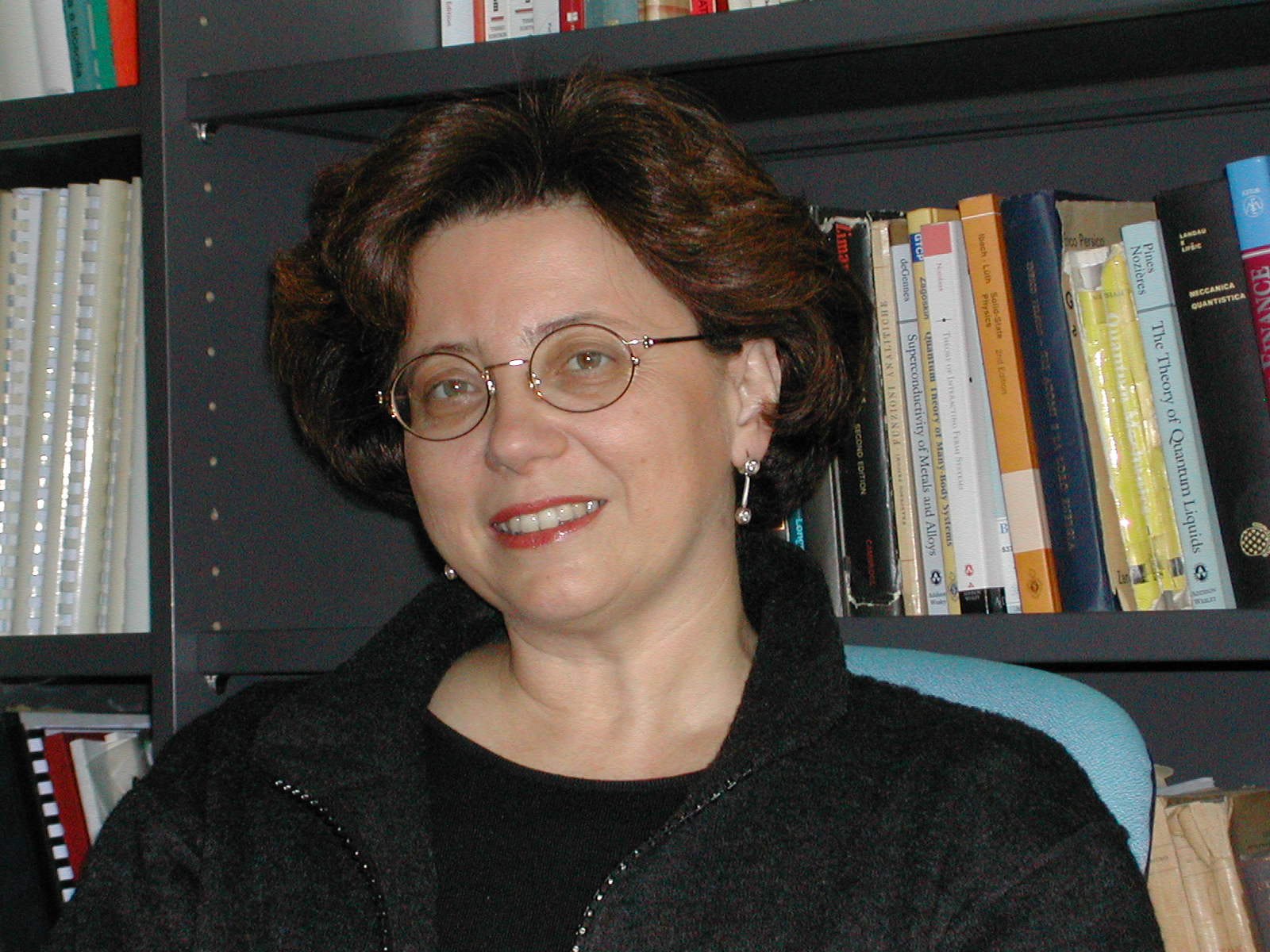 |
Elisa MOLINARI
Professore Ordinario
Dipartimento di Scienze Fisiche, Informatiche e Matematiche sede ex-Fisica
|
Insegnamento: Nanoscience and quantum materials
Physics - Fisica (Offerta formativa 2024)
Obiettivi formativi
The course is meant as a general overview for students of different curricula, enabling cross-fertilization of different disciplines and points of view. After the course, the student is expected to understand the main developments of nanoscience and basic elements of quantum materials. (S)he should be able to control and apply simple theoretical methods to the investigation of low-dimensional systems, to analyze and interpret selected experimental results.
Prerequisiti
Students are expected to be familiar with Electromagnetism, Quantum Physics and basic Solid State Physics.
Programma del corso
DRAFT PROGRAM
(minor updates may be decided during the course based on students feedbacks)
1. Overview (1 CFU)
(1a) What is special at the nanoscale
o Surface matters: Relevant forces and phenomena at the nanoscale
o Small is different: Size and scaling
o Quantum confinement
o Electron interactions
o Self-assembly, recognition, redundance
o Structure / function
(1b) Quantum materials & nanoscale
o Emergence: collective behaviours that arise from strong interactions
o Correlation: strongly correlated materials, low-dimensional materials
o Topological nature of electronic states
o Interplay of multiple degrees of freedom (charge, spin, orbital, lattice)
o Multiple electronic phases, macroscopic quantum phenomena: unconventional superconductivity and magnetism, ferroelectricity, topological insulators, excitonic insulators
2. Concepts and theoretical basis of quantum phenomena at the nanoscale (2 CFU)
o Quantum confinement of electrons
o Phonon confinement and folding
o Excitons
o Few-electron interactions
3. Quantum materials: overview and selected examples (1 credit)
o Overview
o Topological matter
o Excitonic insulators
o …
4. Experimental concepts and approaches to nano- and quantum systems (1 CFU)
o Scanning Tunneling Microscopy and Spectroscopy (STM, STS)
o Atomic Force Microscopy (AFM) and other scanning-probe approaches
o Single Electron Spectroscopy (‘addition’ spectra)
+ analysis of nanoscale and quantum systems through: electron, optical, vibrational spectrocopies
5. Examples of nanoscale phenomena in devices (1 CFU)
o Photovoltaics
o LEDs and lasers
o Single electron transistors
o …
7. Systems (main low-dimensionality examples, as seen across the other Chapters: the corresponding CFUs are counted in previous chapters)
o Semiconductor nanostructures: quantum wells, wires, and dots
o Carbon based nanosystems: fullerenes, nanotubes, graphene, nanoribbons
o Other ‘van der Waals’ materials: 2D, twisted 2D, etc
o (Molecular-based and supramolecular nanosystems)
Metodi didattici
Lectures and discussion/exercise sessions (6 credits, 48 hours), to be held in presence.
On-line synchronous participation may be allowed in special cases. Students who are enrolled as 'working students' and cannot attend the lectures should contact the professor to obtain indications for different parts of the program.
Office hours: Upon appointment (pls send your request by email to molinari@unimore.it).
Testi di riferimento
Unfortunately no single book is available for this course.
- The slides will be uploaded on Moodle (moodle.unimore.it), typically before the lectures.
- A useful text for Section 3 of the Program is: Yu & Cardona, Fundamentals of Semiconductors, Springer 2010, Chapter 9.
- Articles and materials for individual topics will be quoted during the lectures: they will be made available on Moodle unless available on-line.
Verifica dell'apprendimento
Oral exam, covering the topics taught in the lectures. The typical duration is 40 to 60 minutes. It is possible, but not required, to start by presenting an ‘in-depth topic’ of choice.
The solution of some exercises assigned during the course and developed at home is a prerequisite. They should be sent by email during the course, or at least one week before the exam.
Basic knowledge of the topics and partial ability to apply it are required to obtain the minimum mark (18/30). Full knowledge and understanding of all the topics and ability to apply such knowledge (30/30). The maximum mark (30/30 cum laude) requires the ability to use such understanding -possibly with the help of the examiner- to address a question that was not covered in detail during the course.
Intermediate marks between 18/30 and 30/30 reflect the degree of understanding and control of the topics and the expected outcomes, as well as the ability to illustrate and discuss them. They also reflect the quality of the exercise material and the active participation during the lectures. Active participation of the student during the lectures is required for top marks.
The mark is communicated to each student immediately after the exam.
Risultati attesi
Conoscenza e capacità di comprensione:
Al termine del corso lo studente avrà conoscenza e comprensione delle proprietà fondamentali dei nanosistemi e dei materiali quantistici, e di alcune loro applicazioni in campo tecnologico.
Capacità di applicare conoscenza e comprensione:
Al termine del corso lo studente sarà in grado di conoscere le principali proprietà (elettroniche, di trasporto, vibrazionali) di nanosistemi e materiali quantistici a bassa dimensionalità. Saprà ricavarle in alcuni casi semplici e interpretare gli esperimenti.
Autonomia di giudizio:
Ci si aspetta che lo studente acquisti la capacità di valutare
criticamente risultati teorici e sperimentali che descrivano le principali proprietà dei nanosistemi e dei materiali quantistici.
Abilità comunicative:
Ci si aspetta che lo studente acquisti la capacità di discutere con l'appropriata terminologia problemi relativi alle proprietà dei nanosistemi e dei materiali quantistici.
Capacità di apprendimento:
Lo studente sarà in grado di apprendere e discutere gli sviluppi scientifici e tecnologici dello studio delle proprietà dei nanosistemi e dei materiali quantistici. L’uso di libri di testo e di pubblicazioni scientifiche stimolerà le capacità di comprensione degli sviluppi più recenti della ricerca, compresi gli sviluppi provenienti da altre discipline come la chmica o l'ingegneria.